Migration Serengeti Tanzania
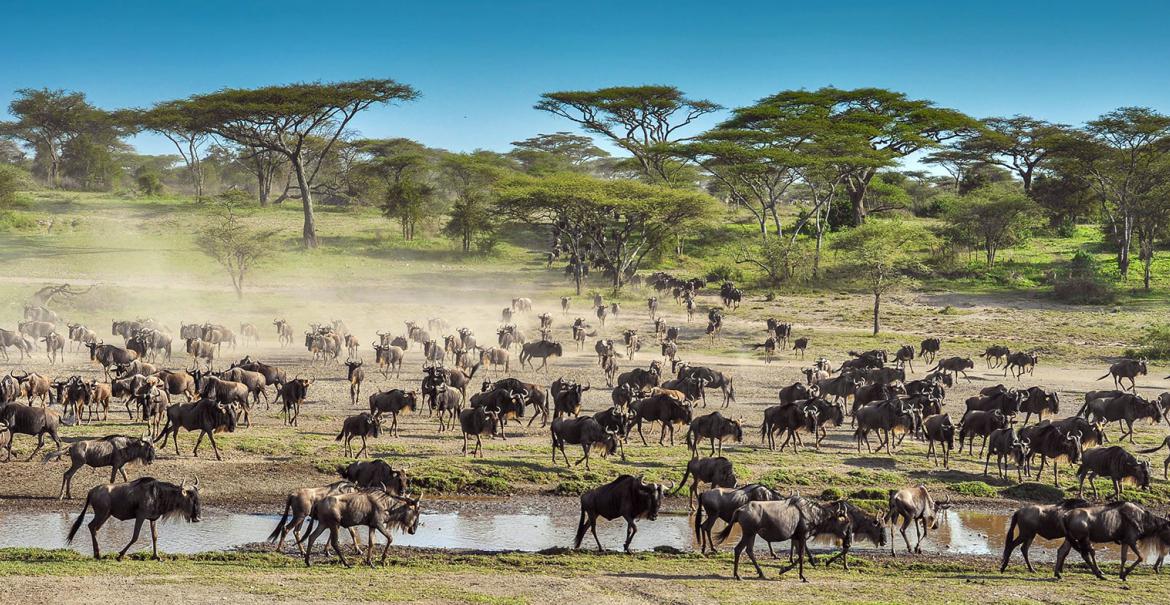
The migration (also known as the 'great trek') of gnus (wildebeests), zebras and gazelles are found here year around. As it becomes dry in the south of Serengeti, approximately 1.5 million gnus are drawn across the vast grasslands of the Serengeti towards Masai Mara in Kenya, in search for food. These are followed by Thomson-gazelles who stayed behind in favour of eating shorter grass, followed by the large predators.
The bulk of the park consists of open grassland (savannah), ‘kopjes’ and strips of acacia are occasionally scattered here and there. The kopjes are large round boulders of granite, making it seem like little islands are in the landscape. They create a perfect observation post for lions and leopards because of its high ground above the landscape, from there they often also become spotted.
Not all animals go along in the great migration (approximately 800 km) from the Serengeti. A large herd of wildebeest are territorial, so they remain in the south of the park. The map shows where the animals can be seen in different times of the year. The mentioned months are only a guide; can be affected by weather conditions.
When is the migration?
Over the past years it has been difficult to predict in what months the large herds will be found, because of the confusion of the weather around the whole world. This is also the case here, and the animals are drawn back after the rain.
We can only give an APPROXIMATION on how the migration goes. The animals walk in about one years time around the Serengeti, where a great bunch are in Tanzania. Approximately between July and October, the world-famous images of herds are from the crossing of the Mara river at the border of Tanzania and Kenya.
Then the herd goes towards the south again, where they dwell in the south of the Serengeti approximately in January and February. All the calves become born here, which again attracts many predators as well.
Basically in every month, with a little luck, you can see large herds in every region. The most remarkable periods are in January/February and during the crossing of the Mara in the north. It is very difficult to estimate to when you are most likely to see the crossing. The stopping of the herd takes a little longer in the south, because of that, the peak season is in northern Tanzania.
BMS-Travellers always ensures you a stay in a lodge or a tented camp close as possible to the estimated locations of where the large herd is. This can allow you to almost always see the herd during a game drive.
You see, it is very difficult to indicate a specific month or date...
Seasons in the Serengeti
The “heavy rains” fall from about March through May and the “light rains” in November. This is not to say that there isn’t a good time to go on a safari, especially if you don’t object to a little rain; you will eventually sit dry in your safari vehicle.
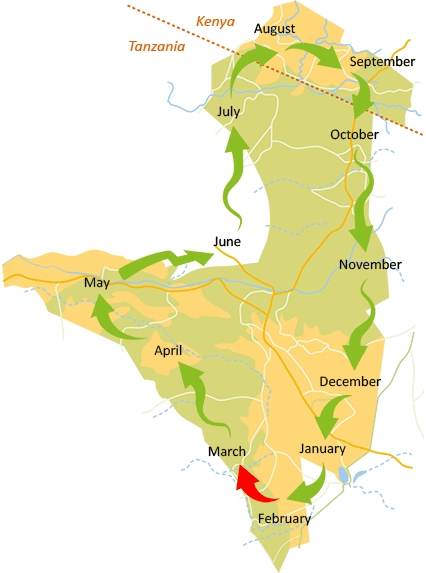
The map shows where the animals can be seen at different times of the year. The mentioned months are only a guide; due to weather conditions this may vary.
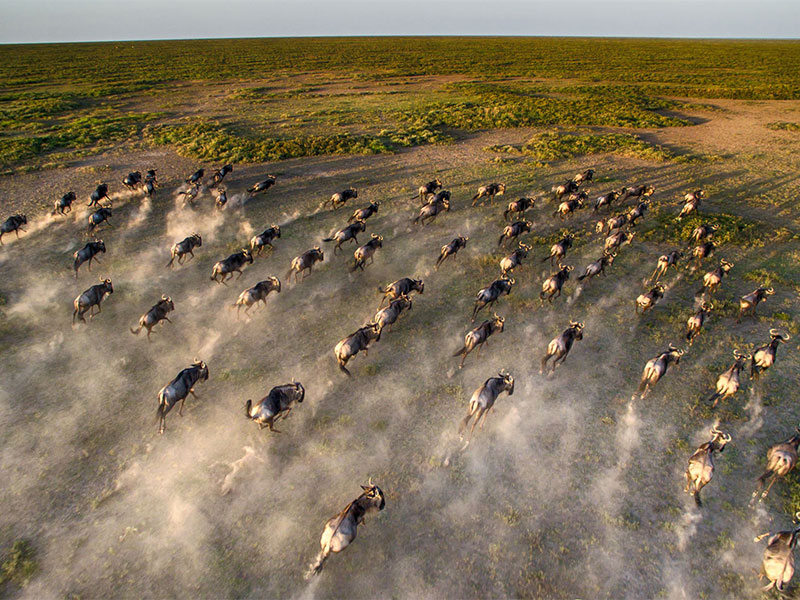
The migration is a natural process. Nature does not read a calendar so there are never hard guarantees, only good estimates of where the animals will be.
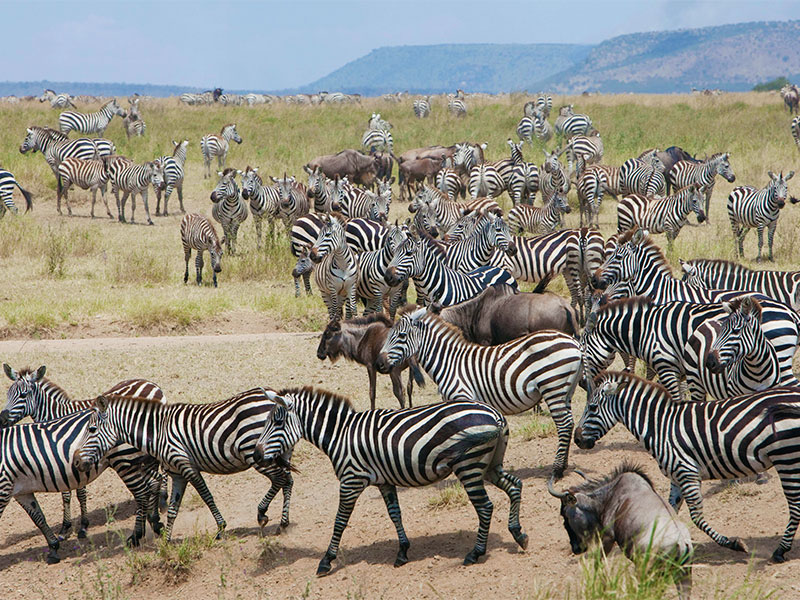
Not only the wildebeests follow the rains for green grass, but also zebras and gazelles. They are followed by the predators, such as lions, cheetas and hyenas.
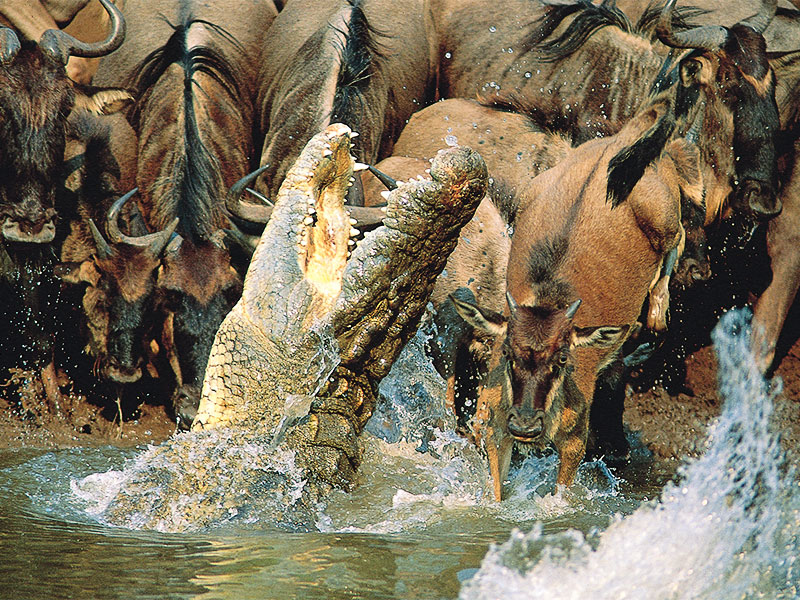
While crossing the big rivers like the Mara and Grumeti, the animals must not only climb the steep banks, but they also have to defy the strong currents and crocodiles.




